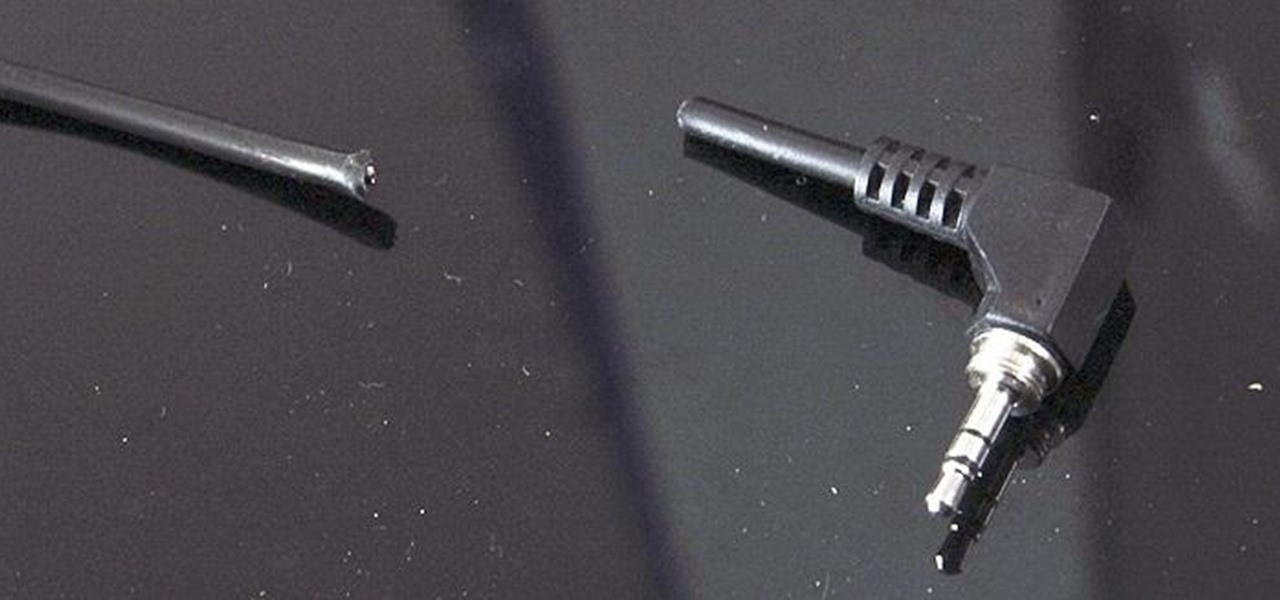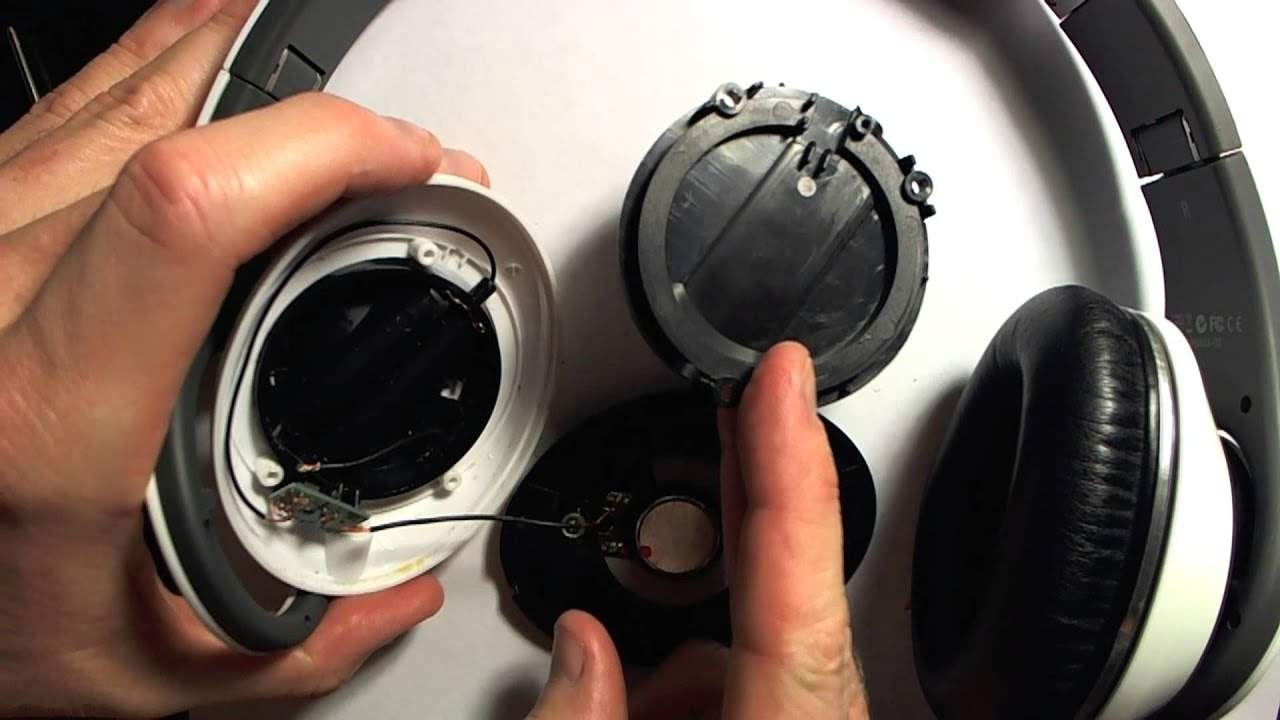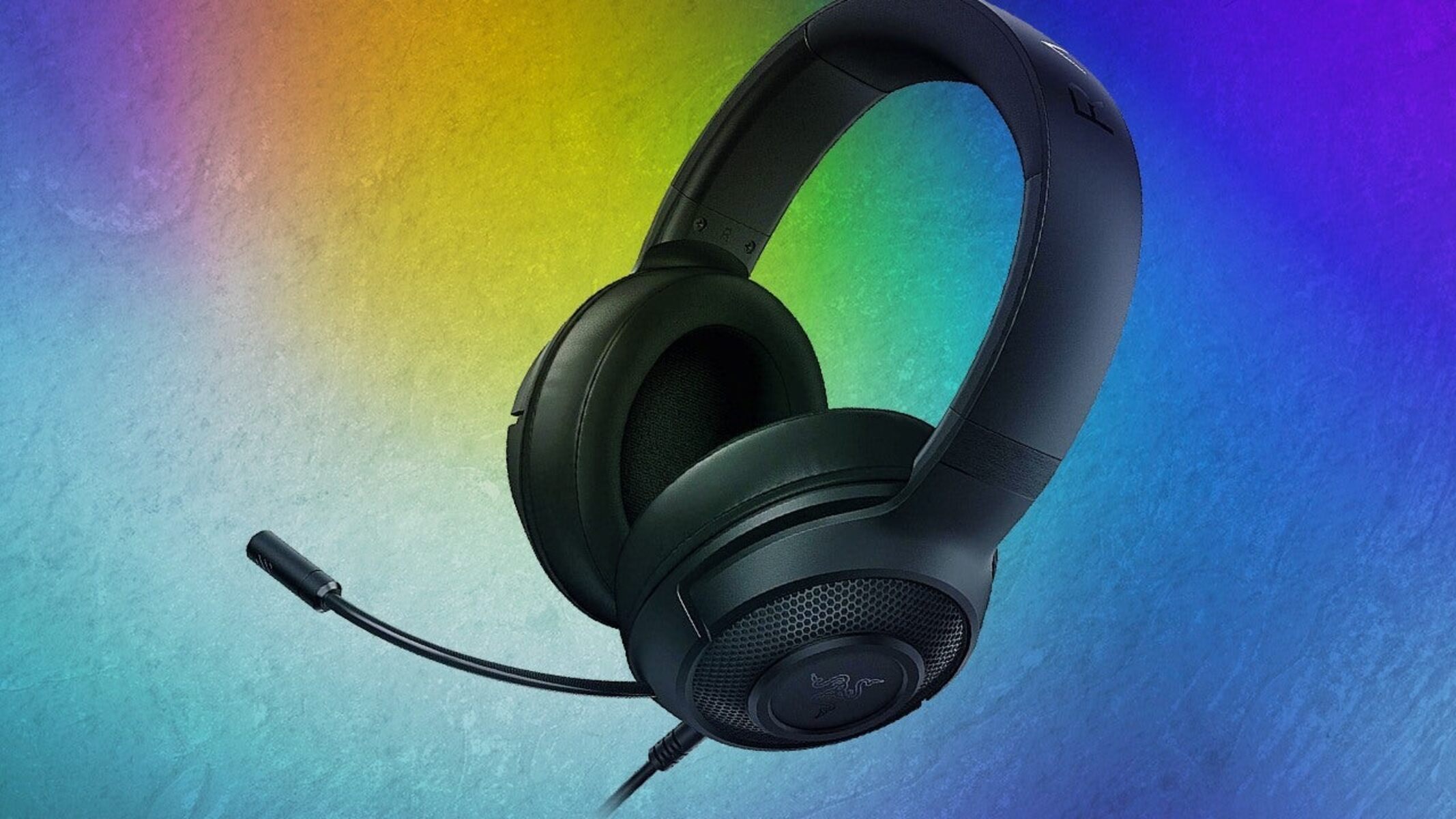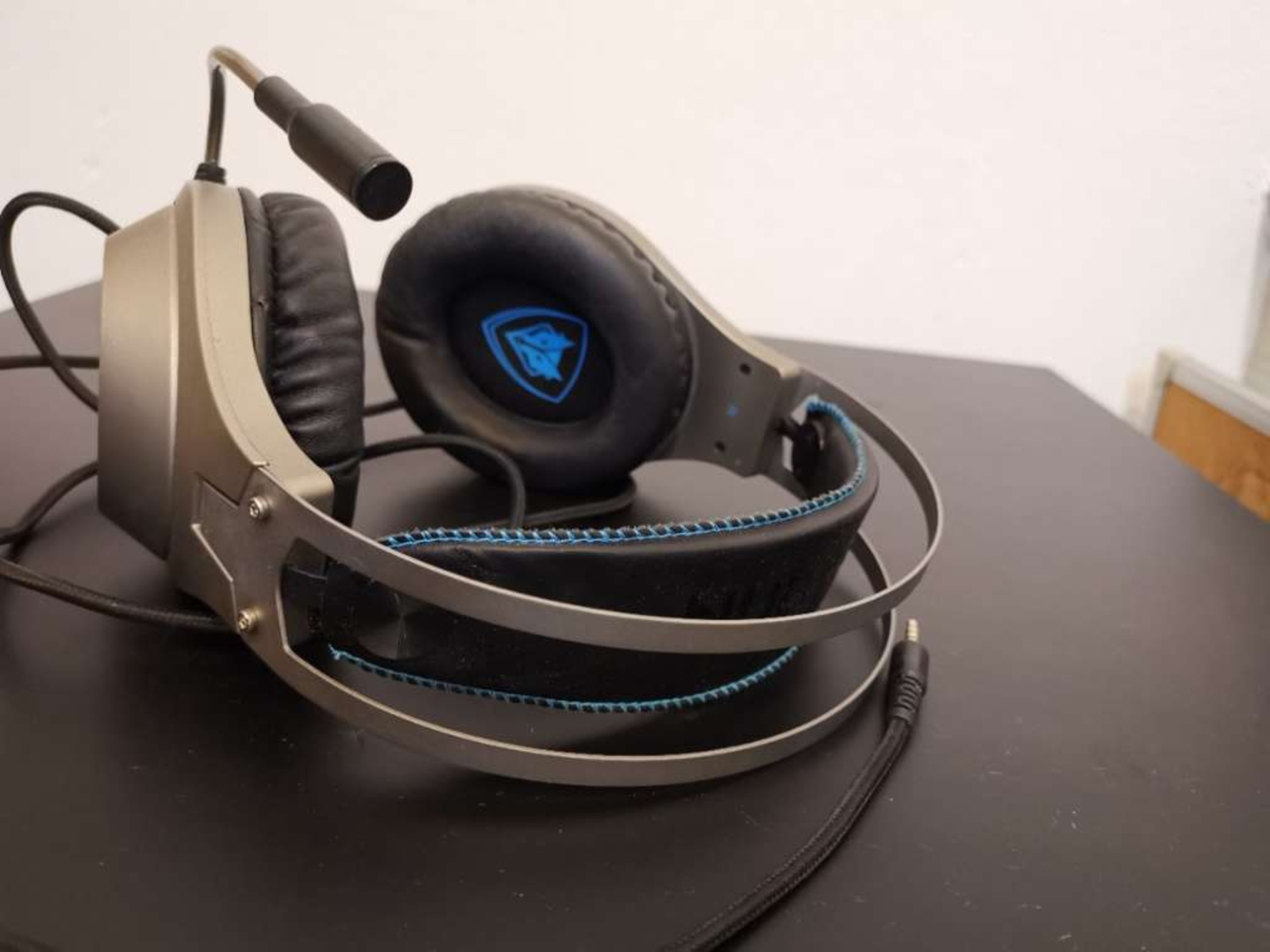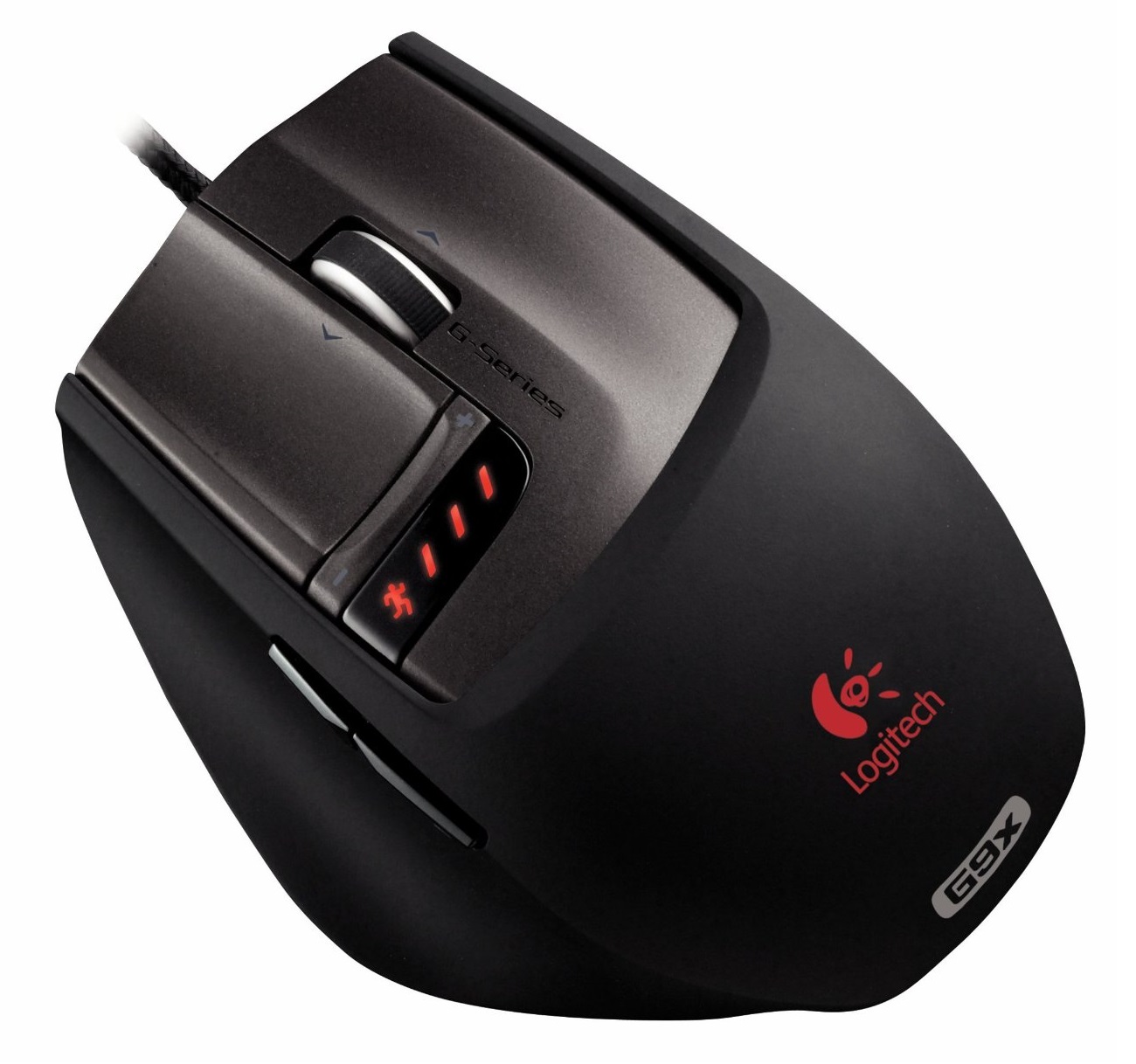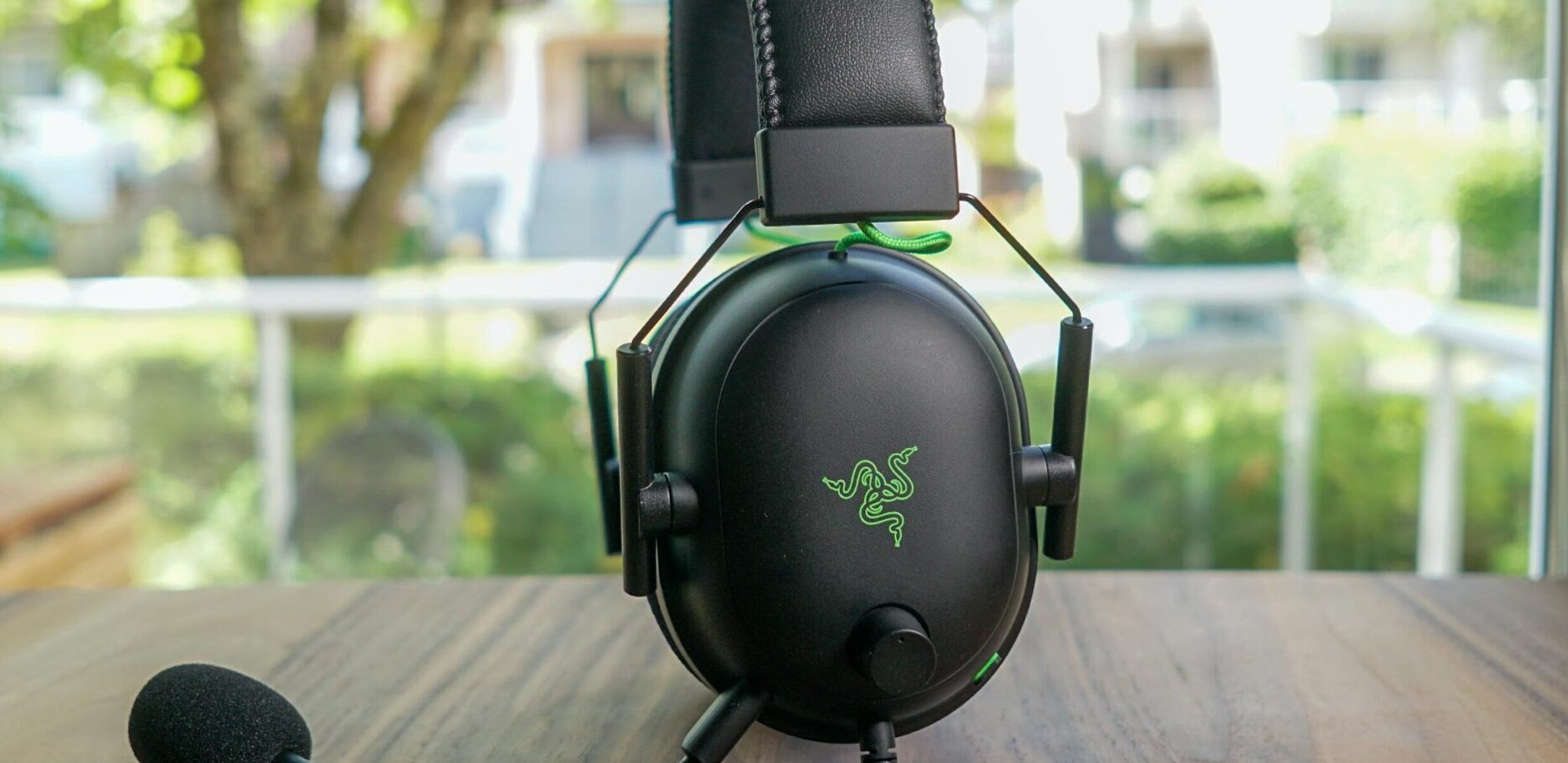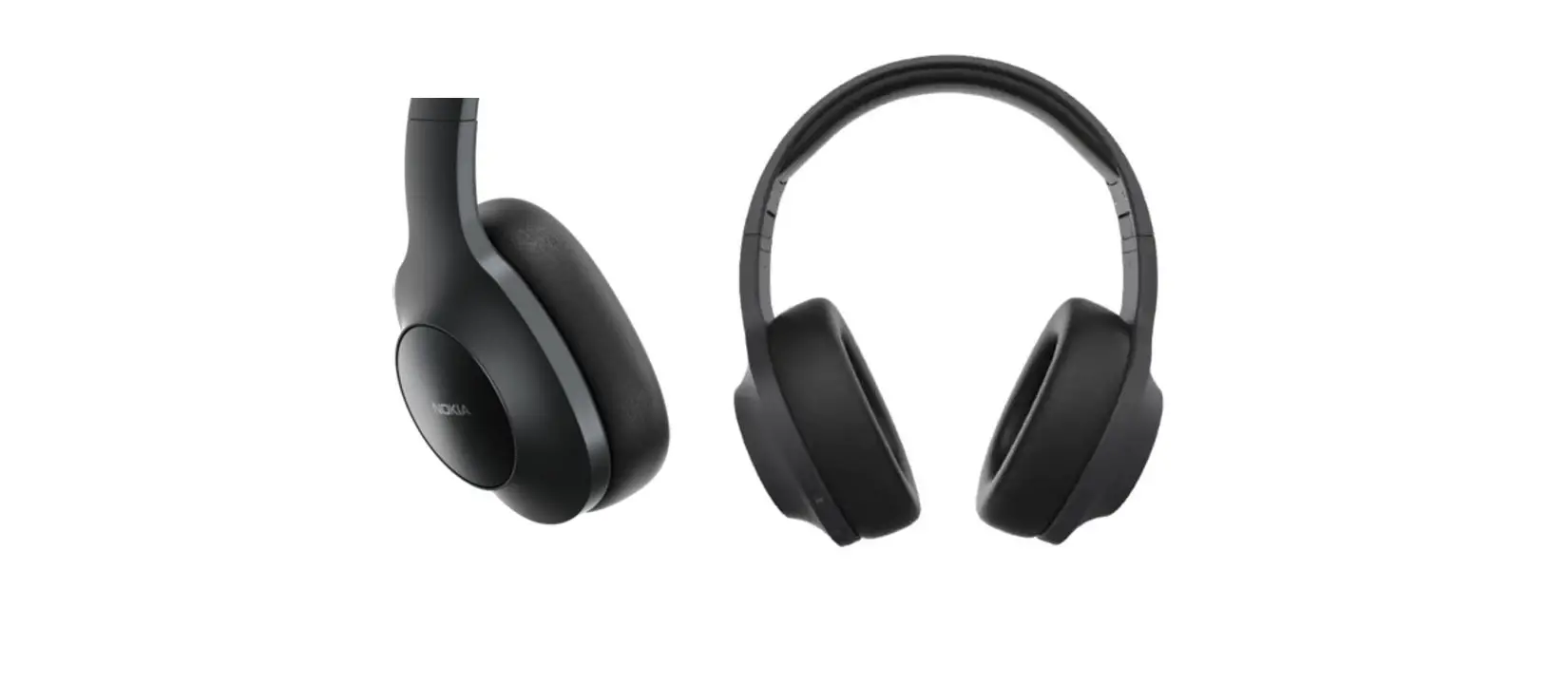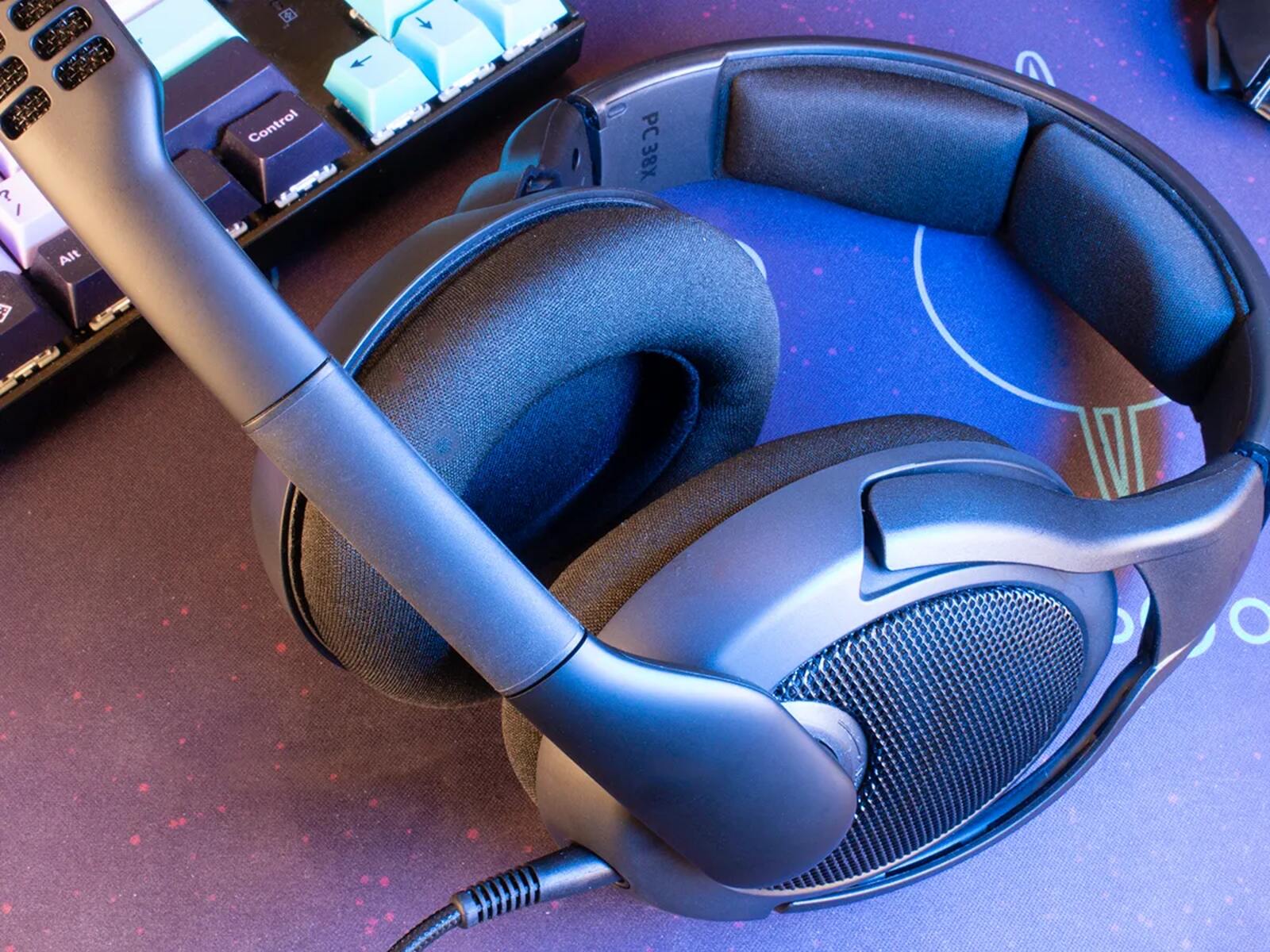Introduction
A broken headphone or headset jack can be a frustrating issue, especially for those who rely on their devices for entertainment, communication, or work. Whether it's a smartphone, tablet, laptop, or any other gadget, a malfunctioning jack can disrupt the audio experience and hinder the overall functionality of the device. Fortunately, with the right knowledge and tools, repairing a broken headset jack is a feasible task that can save you the cost of purchasing a new device or seeking professional repair services.
In this comprehensive guide, we will delve into the step-by-step process of fixing a broken headset jack. By following these instructions, you can potentially restore the functionality of your beloved gadget and continue enjoying your favorite music, podcasts, or videos without interruption. From disassembling the headset to identifying the issue and performing the necessary repairs, this guide will equip you with the essential know-how to tackle this common problem.
Understanding the inner workings of your device and the specific components involved in the audio output process is crucial for a successful repair. By gaining insight into the intricate mechanisms behind the headset jack, you will be better prepared to diagnose and address the issue effectively. Additionally, we will highlight the tools and materials required for the repair, ensuring that you have everything you need at your disposal before embarking on the fixing process.
Embarking on this repair journey not only offers a practical solution to a prevalent problem but also empowers you to take control of the maintenance and upkeep of your devices. With patience, attention to detail, and the guidance provided in this guide, you can confidently navigate the repair process and emerge with a fully functional headset jack. Let's embark on this rewarding endeavor and bring new life to your cherished gadget!
Understanding the Problem
Before diving into the repair process, it's essential to grasp the nature of the problem at hand. A broken headset jack typically manifests as issues with audio output, such as distorted sound, one-sided audio, or complete silence. This can be attributed to a variety of underlying causes, including physical damage to the jack, internal wiring issues, or debris accumulation within the port.
When a headset jack is damaged, it disrupts the seamless transmission of audio signals from the device to the headphones or earphones. This disruption can stem from a range of factors, such as accidental bending or snapping of the headphone plug inside the jack, wear and tear from frequent use, or exposure to moisture and environmental contaminants.
Understanding the anatomy of a standard headset jack is crucial for diagnosing the problem accurately. A typical 3.5mm audio jack consists of several contact points responsible for transmitting audio signals to the connected headphones or earphones. These contact points can become misaligned, corroded, or damaged over time, leading to connectivity issues and compromised audio output.
Furthermore, internal wiring within the device can also contribute to jack-related problems. If the internal wiring connected to the jack becomes loose, frayed, or detached, it can impede the flow of audio signals and result in audio irregularities or complete audio loss.
Debris accumulation within the jack is another common culprit for malfunctioning audio output. Dust, lint, or other foreign particles can obstruct the connection between the device and the headphones, leading to distorted sound or intermittent audio.
By comprehensively understanding the potential causes of a broken headset jack, you can approach the repair process with a clearer perspective. This knowledge will enable you to systematically troubleshoot the issue and implement targeted solutions to restore the functionality of the jack. Armed with this understanding, you are ready to gather the necessary tools and materials and proceed with disassembling the headset to uncover the root of the problem.
Understanding the intricacies of the problem is the first step toward a successful repair, and it sets the stage for a methodical and effective troubleshooting process. With this foundational knowledge in place, you are well-equipped to embark on the journey of repairing your broken headset jack.
Tools and Materials Needed
Repairing a broken headset jack requires a specific set of tools and materials to facilitate the disassembly, diagnosis, and repair process. By ensuring that you have the following items on hand, you can streamline the repair procedure and address the issue with precision and efficiency.
Tools:
-
Precision Screwdriver Set: A precision screwdriver set is indispensable for disassembling the device housing and accessing the internal components, including the headset jack. Opt for a set that includes various head types and sizes to accommodate the screws commonly found in electronic devices.
-
Nylon Spudger or Opening Tool: A non-conductive nylon spudger or opening tool is essential for prying open the device's casing without causing damage. This tool enables gentle separation of the housing components, allowing access to the internal circuitry and components.
-
Tweezers: Fine-point tweezers are invaluable for handling small components and delicate wiring within the device. They aid in precise manipulation and placement of components during the repair process.
-
Multimeter: A multimeter is a versatile instrument for diagnosing electrical connectivity issues within the headset jack and associated wiring. It allows for the measurement of resistance, continuity, and voltage, providing valuable insights into the condition of the electrical pathways.
-
Soldering Iron and Solder: In cases where the headset jack requires soldering to address wiring or contact point issues, a quality soldering iron and solder are essential. Opt for a soldering iron with adjustable temperature settings to accommodate various soldering requirements.
-
Desoldering Pump or Wick: When undertaking soldering-related repairs, a desoldering pump or desoldering wick is indispensable for removing excess solder and correcting soldering errors.
-
Cleaning Tools: Soft-bristled brushes, compressed air, and isopropyl alcohol are essential for cleaning the interior components and the headset jack. These tools aid in removing debris, dust, and contaminants that may be impeding the functionality of the jack.
Materials:
-
Replacement Headset Jack: Depending on the diagnosis of the issue, you may require a replacement headset jack. Ensure that the replacement jack is compatible with your device and possesses the necessary contact points and dimensions.
-
Electrical Tape: Electrical tape is useful for insulating and securing wiring connections, providing an additional layer of protection against short circuits and electrical interference.
-
Replacement Wiring (if needed): If the internal wiring connected to the headset jack is damaged beyond repair, having replacement wiring on hand is essential for conducting precise rewiring and restoration of connectivity.
-
Lint-Free Cloths: Lint-free cloths are ideal for wiping and drying internal components and connectors after cleaning with isopropyl alcohol, ensuring a clean and dry environment for the repair process.
By assembling the aforementioned tools and materials, you will be well-prepared to embark on the repair journey with confidence and precision. These resources will empower you to navigate the disassembly, diagnosis, and repair stages with proficiency, ultimately leading to the successful restoration of your headset jack's functionality.
Step 1: Disassembling the Headset
Disassembling the headset is the crucial first step in accessing the internal components, including the malfunctioning headset jack. Before initiating the disassembly process, it is essential to ensure that the device is powered off and disconnected from any power sources to prevent electrical hazards and damage to the components.
Using a precision screwdriver from the set, carefully identify and remove the screws securing the device's outer casing. It is crucial to keep track of the screws and their respective locations to facilitate reassembly later. Once the screws are removed, a non-conductive nylon spudger or opening tool can be gently inserted along the edges of the casing to pry it open. Care must be taken to avoid exerting excessive force, as this can lead to damage to the casing or internal components.
As the casing is separated, attention should be paid to any ribbon cables or connectors that may be linking the front and back panels of the device. These connectors must be delicately detached to ensure smooth separation and prevent damage to the cables or connectors. It is advisable to take note of the orientation and arrangement of these connectors to facilitate reconnection during the reassembly phase.
Upon successful separation of the casing, the internal components, including the circuit board, battery (if applicable), and the headset jack, are now accessible for inspection and repair. Care should be taken to avoid unnecessary handling of delicate components and wiring to prevent accidental damage.
By methodically disassembling the headset, you have gained access to the internal components, laying the groundwork for identifying the issues affecting the headset jack. With the device disassembled, you are now poised to proceed with the next crucial step: identifying the specific issue causing the malfunction and formulating an effective repair strategy.
Step 2: Identifying the Issue
With the headset disassembled, the next pivotal phase in the repair process involves meticulously identifying the underlying issue affecting the functionality of the headset jack. A systematic approach to diagnosis is essential for pinpointing the specific cause of the malfunction and formulating an effective repair strategy.
The initial step in identifying the issue is to visually inspect the headset jack and surrounding components for any visible signs of damage or irregularities. This includes examining the contact points within the jack for corrosion, misalignment, or physical damage. Additionally, a close inspection of the internal wiring connected to the jack is crucial, as loose, frayed, or severed wiring can contribute to connectivity issues and audio irregularities.
The use of a multimeter proves invaluable during the diagnostic process, enabling the measurement of resistance and continuity within the headset jack and associated wiring. By carefully probing the contact points and conducting continuity tests, it is possible to ascertain the integrity of the electrical pathways and pinpoint any disruptions or irregularities in the connectivity.
Furthermore, the diagnostic process may involve testing the headset jack with alternate headphones or earphones to determine if the issue lies with the jack itself or the connected accessory. This comparative testing aids in isolating the root cause of the audio irregularities and provides valuable insights into the specific component requiring attention.
Debris accumulation within the headset jack can also be a contributing factor to malfunctioning audio output. Therefore, a thorough cleaning of the jack using soft-bristled brushes, compressed air, and isopropyl alcohol is essential to remove any foreign particles that may be impeding the connection and causing audio disruptions.
During the diagnostic phase, keen attention should be given to any previous repair attempts or modifications that may have inadvertently contributed to the current issue. Any evidence of substandard repairs, soldering errors, or makeshift solutions should be carefully assessed and rectified to ensure a comprehensive restoration of the headset jack's functionality.
By meticulously identifying the issue through visual inspection, electrical testing, comparative analysis, and thorough cleaning, you are equipped with the essential insights needed to proceed with the targeted repair of the malfunctioning headset jack. This diligent approach sets the stage for the subsequent repair phase, where specific issues will be addressed with precision and expertise.
Step 3: Repairing the Jack
Repairing the jack involves a meticulous approach to addressing the specific issues identified during the diagnostic phase. Depending on the nature of the problem, the repair process may encompass a range of targeted solutions aimed at restoring the functionality of the headset jack. Here's a detailed breakdown of the repair process:
Contact Point Realignment or Replacement
If visual inspection and electrical testing reveal misaligned or corroded contact points within the headset jack, realignment or replacement of the jack may be necessary. Using fine-point tweezers, the contact points can be delicately realigned to ensure proper connectivity with the headphone plug. In cases where corrosion or irreversible damage is present, replacing the headset jack with a compatible replacement becomes imperative. Careful desoldering of the existing jack and precise soldering of the replacement jack are essential for a seamless transition.
Wiring Restoration and Reinforcement
In instances where the internal wiring connected to the headset jack exhibits signs of damage, fraying, or detachment, meticulous restoration and reinforcement of the wiring are paramount. Replacement wiring, if deemed necessary during the diagnostic phase, can be meticulously integrated into the circuitry. Secure soldering of the wiring to the designated contact points and the application of electrical tape for insulation ensure reliable connectivity and longevity.
Debris Removal and Cleaning
Debris accumulation within the headset jack can impede proper audio transmission and connectivity. Utilizing soft-bristled brushes, compressed air, and isopropyl alcohol, the interior of the jack and surrounding components are meticulously cleaned to eliminate any foreign particles or contaminants. This comprehensive cleaning process restores the integrity of the electrical pathways and ensures unimpeded audio transmission.
Testing and Validation
Following the repair interventions, thorough testing of the headset jack is imperative to validate the effectiveness of the repairs. This entails reconnecting the device's components, including the circuit board and any detached connectors, and testing the audio output with headphones or earphones. The testing phase serves to confirm the successful restoration of audio functionality and identifies any residual issues requiring further attention.
By methodically addressing the identified issues and implementing targeted repair solutions, the headset jack is poised for a comprehensive restoration of functionality. The precision and expertise applied during the repair process lay the foundation for a successful reassembly phase and the subsequent validation of the repaired jack's performance.
Step 4: Reassembling the Headset
Reassembling the headset marks the culminating phase of the repair process, where meticulous attention to detail and methodical precision is essential to ensure the seamless integration of the internal components. The successful reassembly of the headset is pivotal in reinstating its structural integrity and functionality, ultimately culminating in a fully restored device.
The reassembly process commences with the careful reconnection of any detached components, such as the circuit board, battery (if applicable), and any ribbon cables or connectors that were delicately detached during the disassembly phase. Each connection must be aligned and secured with precision to facilitate optimal functionality and prevent any potential issues arising from loose or misaligned connections.
As the internal components are meticulously repositioned within the device housing, attention should be directed towards ensuring that the components are nestled securely without exerting undue pressure on delicate wiring or connectors. The reassembly process demands a delicate balance between precision and gentleness to safeguard against inadvertent damage to the internal circuitry or components.
Once the internal components are secured within the housing, the outer casing is carefully aligned and affixed in place. The previously removed screws, meticulously organized during the disassembly phase, are systematically reinserted and tightened to secure the casing. It is imperative to adhere to the designated screw locations and avoid over-tightening, as this can lead to damage to the casing or the internal components.
Upon the completion of the reassembly process, a comprehensive visual inspection of the device is conducted to verify the secure integration of the components and the absence of any loose connections or irregularities. This meticulous scrutiny ensures that the reassembly has been executed with precision and attention to detail, setting the stage for the final phase of the repair process.
With the headset successfully reassembled, it is poised for the conclusive phase of the repair journey: testing the repaired jack to validate its restored functionality. The seamless reassembly of the device, characterized by meticulous attention to detail and precision, lays the groundwork for the successful validation of the repair efforts and the triumphant restoration of the headset's audio functionality.
The reassembly phase represents the culmination of the repair process, where the meticulous integration of internal components and the restoration of the device's structural integrity pave the way for the conclusive validation of the repaired jack's performance.
Testing the Repaired Jack
After the meticulous reassembly of the headset, the critical phase of testing the repaired jack ensues. This pivotal testing phase serves as the definitive validation of the repair efforts, affirming the successful restoration of the headset's audio functionality. The testing process involves a series of comprehensive assessments aimed at ensuring the seamless transmission of audio signals and the absence of any residual issues affecting the repaired jack.
The initial step in testing the repaired jack involves reconnecting the device to a power source, powering it on, and initiating an audio playback test. This test entails playing various audio files, including music tracks, podcasts, or audio clips, to evaluate the clarity, balance, and consistency of the audio output. By employing different audio sources and genres, the comprehensive evaluation encompasses a diverse range of audio frequencies and characteristics, providing a holistic assessment of the repaired jack's performance.
Furthermore, the testing phase includes an assessment of the audio output consistency and stability when the headphone plug is gently manipulated or rotated within the jack. This maneuver simulates real-world usage scenarios and aids in identifying any intermittent connectivity issues or audio disruptions that may arise from movement or positioning of the headphone plug. The absence of audio irregularities during these manipulations serves as a testament to the successful restoration of the jack's connectivity and functionality.
In addition to audio playback tests, the repaired jack undergoes rigorous compatibility assessments with various headphones and earphones to ensure seamless connectivity and optimal audio transmission. This comparative testing with different audio accessories serves to validate the universal compatibility of the repaired jack, affirming its ability to accommodate a diverse range of audio devices without compromising audio quality or connectivity stability.
The final stage of testing involves assessing the jack's functionality under varying environmental conditions, including exposure to mild vibrations and movements. This real-world simulation ensures that the repaired jack maintains consistent audio output and connectivity resilience, even in dynamic usage scenarios. By subjecting the repaired jack to these environmental tests, its robustness and reliability are validated, instilling confidence in its sustained performance.
By subjecting the repaired jack to a comprehensive battery of tests encompassing audio playback evaluations, compatibility assessments, and real-world simulations, the successful restoration of the headset's audio functionality is unequivocally confirmed. The seamless performance exhibited during these tests serves as a testament to the precision and expertise applied throughout the repair process, culminating in the triumphant resurrection of the malfunctioning headset jack.
Conclusion
In conclusion, the journey of repairing a broken headset jack is a testament to the power of knowledge, precision, and perseverance in overcoming technical challenges. Throughout this comprehensive guide, we have delved into the intricacies of diagnosing, repairing, and validating the restoration of a malfunctioning headset jack, equipping individuals with the essential expertise to undertake this rewarding endeavor.
The process commenced with a deep understanding of the problem, acknowledging the diverse factors that can contribute to a broken headset jack, including physical damage, wiring issues, and debris accumulation. By comprehensively grasping the underlying causes, individuals are empowered to approach the repair process with clarity and purpose, setting the stage for a methodical and effective troubleshooting journey.
The significance of assembling the requisite tools and materials cannot be overstated, as they form the foundation for a seamless repair experience. From precision screwdrivers and multimeters to replacement jacks and cleaning tools, the meticulous assembly of these resources ensures that individuals are well-prepared to navigate the disassembly, diagnosis, and repair phases with proficiency and precision.
The step-by-step approach outlined in this guide, from disassembling the headset to identifying the specific issue affecting the jack, and subsequently implementing targeted repair solutions, serves as a comprehensive roadmap for individuals seeking to restore the audio functionality of their beloved devices. The emphasis on meticulous attention to detail, precision soldering, and comprehensive testing underscores the commitment to achieving a thorough and enduring repair outcome.
The culmination of the repair journey, marked by the meticulous reassembly of the headset and the comprehensive testing of the repaired jack, validates the successful restoration of audio functionality. The triumphant validation of the repaired jack's performance, characterized by seamless audio transmission, compatibility with various accessories, and resilience in dynamic usage scenarios, underscores the efficacy of the repair efforts and the unwavering commitment to excellence.
Embarking on the repair journey of a broken headset jack not only yields a tangible solution to a prevalent technical issue but also cultivates a sense of empowerment and mastery over the maintenance of personal devices. By harnessing the insights and expertise garnered from this guide, individuals are poised to embark on future repair endeavors with confidence and proficiency, reinforcing the enduring value of knowledge and hands-on technical skills.
In essence, the repair journey encapsulates the fusion of technical proficiency, problem-solving acumen, and a steadfast commitment to restoring the functionality of cherished devices. It stands as a testament to the transformative power of knowledge and expertise, empowering individuals to overcome technical challenges and breathe new life into their beloved gadgets.







